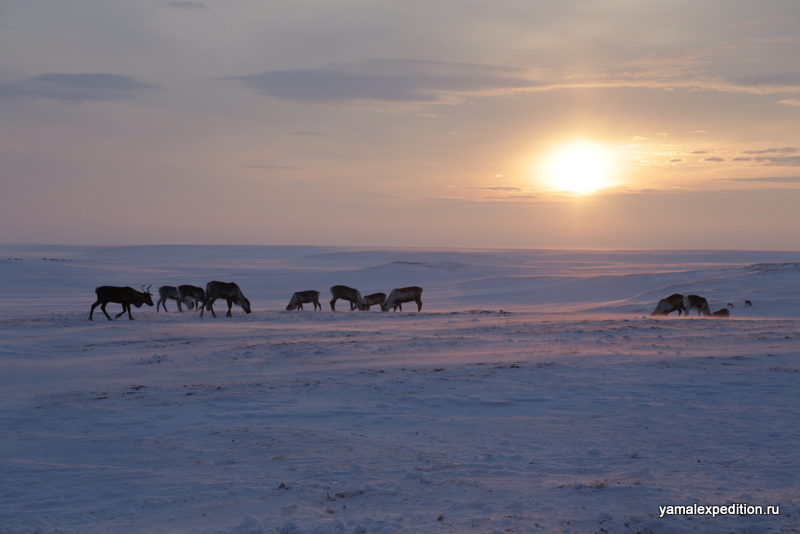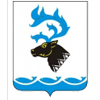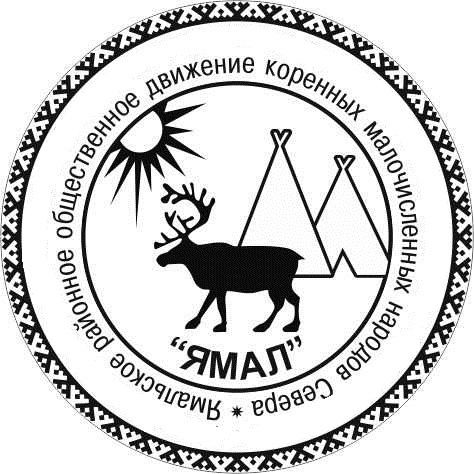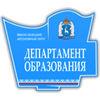8.04.
All the day our family prepared for the future kaslanie (kaslanie,n., kaslat', v. Komi-Zyrian, nomadic movement, nomadic move). Having checked the new brought sledges our tundra natives criticized not the perfect work of village craftsmen and repaired the narty. All the luggage was put in vandako and yukhuna, the different types of the freight sledges. They formed 4 argishes of app. 8 sledges.

Our master Konstantin Serotetto.

Our mistress Albina Serotetto.

From left to right, junior kids of Kostya and Alya: Semyonko, Hasavako and Pedavako.
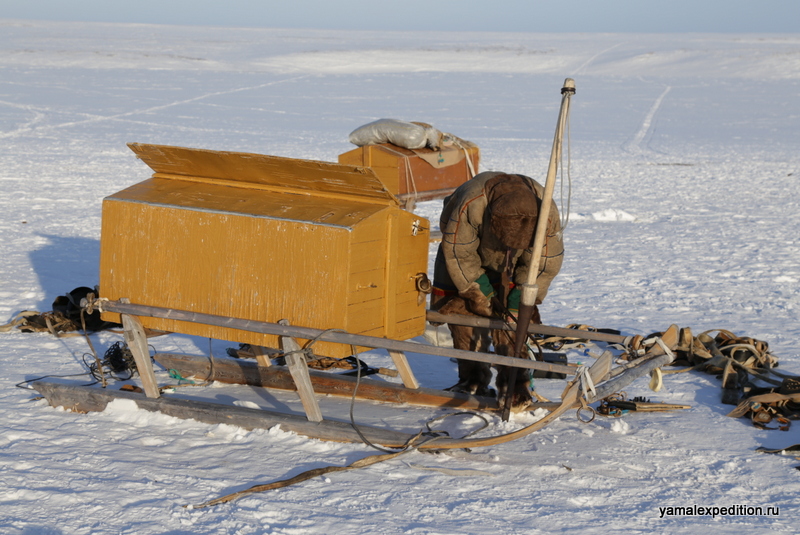
Nache (Kostya's father) repairing the harness.
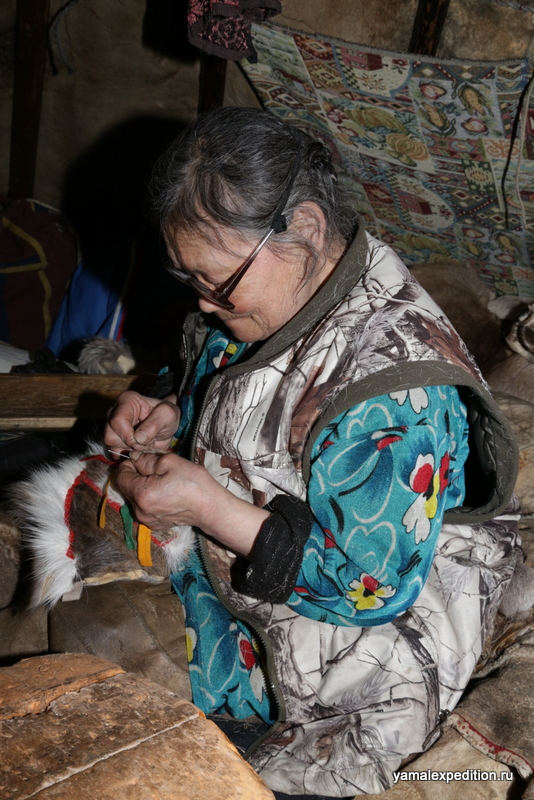
Mamanka (Kostya's mother) sewing in chum.
9.04.
This time of the year our family wakes up by 9.00 a. m. Women are the first and they immediately start to heat the stove. That day the kaslanie was planned, so everybody woke up earlier. Within the modern tundra nomas two different life rhythms coexist – in brigades of the collective reindeer herders enterprises and in the society of free “private” reindeer herders. Any brigade formed by several families (app. 10 herdsmen, 3-5 women “chum-workers” and all the population of 5-8 chums) should follow the established schedule unlike the free herders.
The Serotetto family was standing on one place for more than 2 months, that's why the preparations took a long time. That was an important moment when all the goods and tools used during winter were packed and only the most necessary set of things was left. It also will be limited in a warm season.
Kaslaniestarted at 15.00 p. m. and the traditional order of things was “spoiled” by Eduardo, the Spanish photographer, the family guest who had dreamed to take photos of reindeer and argishes and Kostya moved with him in the snowmobile with us in the “buran” sledges leading the whole caravan. Respecting the Eduardo's request we didn't manage our own argish for he wanted to avoid taking photos with lutsa (Nenets – derived “russkiy” (Russian), but now it is used for any European, for example Eduardo). By the way such personal heders's guests are the common segment of a tourist auditory at Yamal, especially at spring when it is relatively warm, but still easy to reach any point via frozen routes.
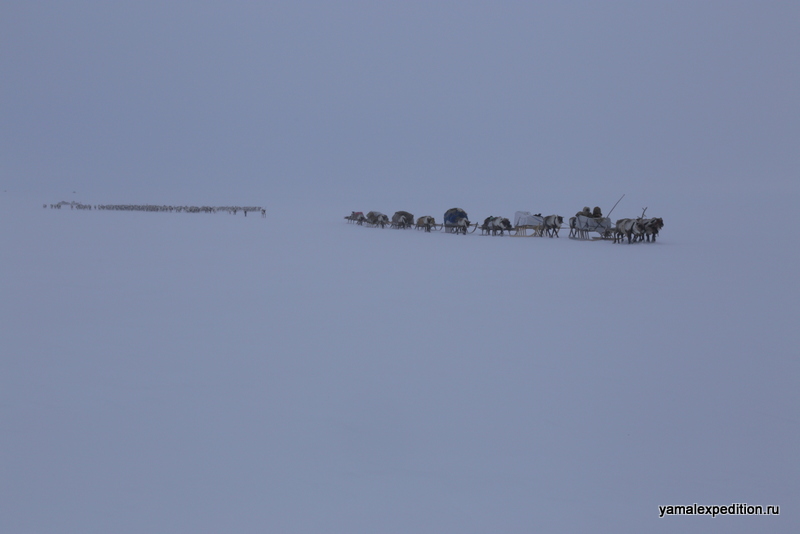
The last argish and the herd.

Argishes coming to the new camp place.
Our family moved comparatively not far. Our new coordinates: N 68º51'12,5” E 070º01'47,1”, so we moved 5,7 kms straightwards NE (along a thread, as they say here meaning the line on the display of a GPS-navigator), and the whole distance crossed by our argishes was not more than 8 kms.
At the eve when we established our chum the wind strengthened – since our arrival the weather was fine: bright sun and light breeze.

Establishing the chum after kaslanie.
